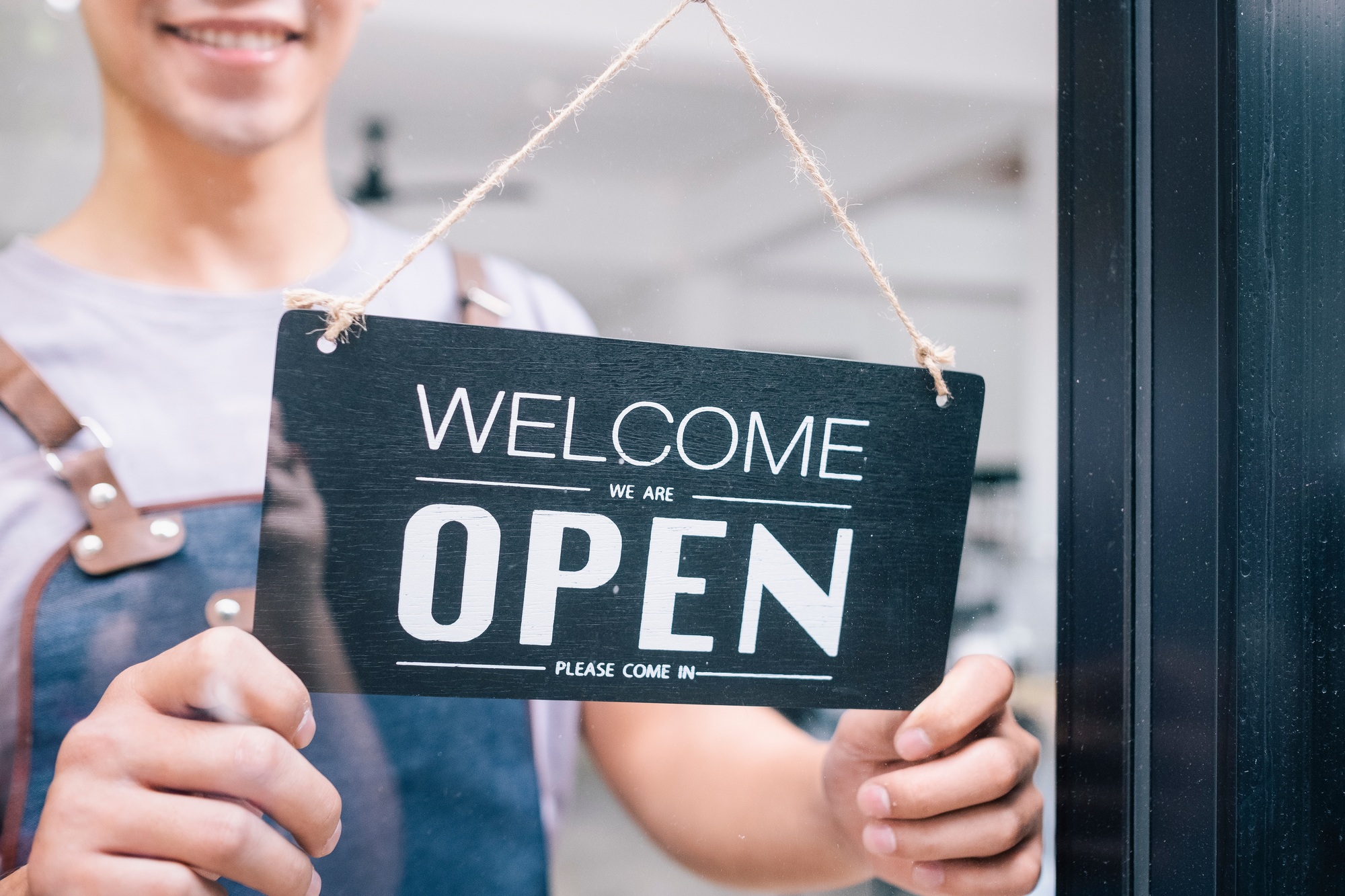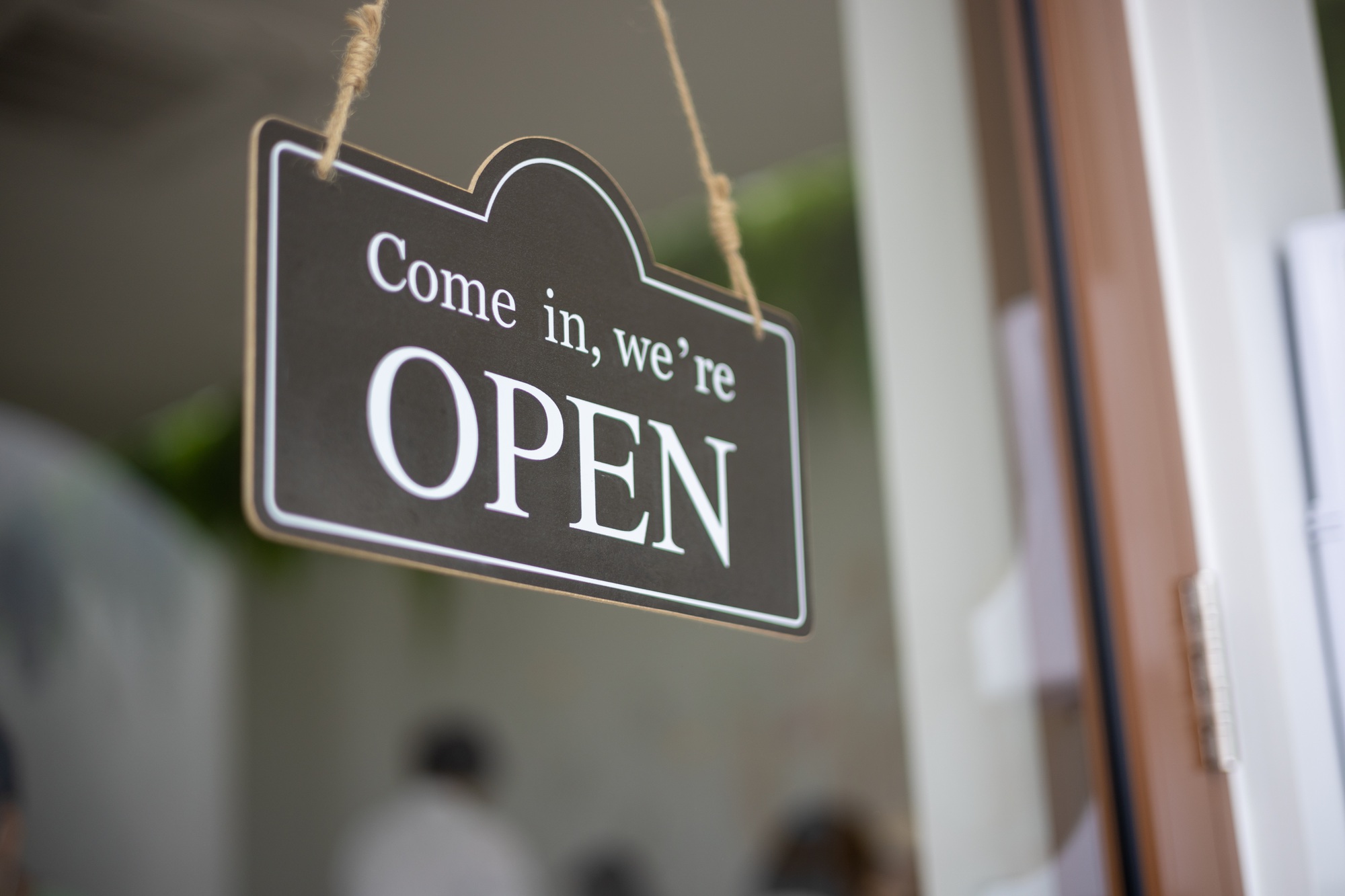Key Takeaways

- Create a Comprehensive Business Plan: Outline your vision, target market, budget, and operational strategy, including clear goals and financial projections.
- Choose the Right Location: Select a strategic and accessible spot that attracts foot traffic, aligns with your target demographic, and enhances visibility.
- Obtain Necessary Licenses and Permits: Ensure your coffee shop complies with local regulations by acquiring essential licenses, health permits, and permits from local authorities.
- Design an Inviting Atmosphere: Focus on creating a welcoming and comfortable space with a cohesive theme, appealing decor, and a layout that facilitates customer flow.
- Develop a Unique Menu: Craft a diverse menu featuring signature coffee drinks and food options that resonate with local preferences, ensuring quality and variety.
- Implement Effective Marketing Strategies: Build your brand presence through social media, local collaborations, and engaging marketing campaigns to attract and retain customers.
Opening a coffee shop can be an exciting venture that blends passion for coffee with the joy of creating a welcoming space for your community. Whether you’re a coffee enthusiast or a savvy entrepreneur, the idea of running your own café can be both thrilling and daunting. You might be wondering where to start and what steps to take to turn your dream into reality.
From finding the perfect location to crafting a unique menu, every decision you make plays a crucial role in your shop’s success. With the right guidance and a clear plan, you can navigate the process smoothly. Let’s dive into the essentials of launching your coffee shop and explore how to make it a favorite spot for locals and visitors alike.
How To Open A Coffee Shop

Opening a coffee shop involves several key steps. Follow this guide to establish a successful small business.
1. Develop a Business Plan
Create a detailed business plan that outlines your vision, target market, budget, and operational strategy. Include a marketing plan to attract customers when you open.
2. Choose a Location
Select a strategic location that attracts foot traffic, has ample parking, and fits your target demographic. Consider visibility and accessibility as important factors.
3. Register Your Business
Register your coffee shop with local authorities to comply with regulations. Obtain necessary permits and licenses specific to food and beverage establishments.
4. Design Your Menu
Craft a unique menu featuring various coffee drinks, teas, and food items. Adapt offerings to cater to local preferences and dietary needs, ensuring variety and quality.
5. Source Suppliers
Identify reliable suppliers for coffee beans, pastries, milk, and equipment. Establish partnerships with local vendors to enhance your shop’s community presence.
6. Create the Atmosphere
Design an inviting and comfortable space that reflects your brand. Incorporate cozy seating arrangements, the right lighting, and appealing decor to encourage customer visits.
7. Hire Staff
Recruit skilled baristas who share your passion for coffee. Prioritize excellent customer service to create a welcoming environment for guests.
8. Implement Marketing Strategies
Promote your coffee shop through various channels like social media, local events, and collaborations with nearby businesses. Build a brand presence to attract and retain customers.
9. Set Up Operations
Establish efficient daily operations covering inventory management, staffing schedules, and customer service protocols. Document processes to maintain consistency and quality.
https://www.youtube.com/watch?v=KVBvuQv7DeA
10. Launch Your Shop
Choose a grand opening date and prepare for the event. Offer promotions to draw in customers and showcase your menu offerings effectively.
Following these steps helps ensure a solid foundation for your coffee shop, enhancing the likelihood of its success as a small business in your community.
Researching Your Market

Conduct thorough market research to set a strong foundation for your coffee shop. This involves understanding your target audience and analyzing competitors.
Understanding Your Target Audience
Identify the specific demographics of your potential customers. Focus on population size, age, gender, job status, and disposable income. Surveys and interviews provide valuable insights into preferences, such as coffee types and additional food offerings. Recognize trends in customer behavior, such as frequency of visits and purchase patterns. This data informs decisions regarding your small business’s menu, pricing, and marketing strategies. Knowing your audience helps tailor the coffee shop experience to meet their needs effectively.
Analyzing Competitors
Evaluate existing coffee shops in your desired area. Assess their strengths and weaknesses, paying attention to factors like product offerings, pricing strategies, and customer service. Note any gaps in the market where your coffee shop can differentiate itself. Understanding competitor positioning aids in formulating your unique selling proposition. Establish what customers enjoy about competitors and what they criticize. This analysis supplies critical information that shapes your business strategy and enhances your competitive advantage.
Creating A Business Plan

A detailed business plan forms the backbone of your coffee shop. It aligns your vision with operational strategies and provides clarity for potential investors.
Defining Your Concept
Define your coffee shop’s unique concept to stand out. Consider the type of atmosphere you want to create such as cozy or modern. Identify your customer base and understand their coffee preferences. Include specific offerings like specialty drinks or unique pastries. Create a vision that reflects your brand values and fosters a welcoming environment.
Setting Goals and Objectives
Set clear goals and objectives for your coffee shop’s success. Establish measurable objectives such as achieving a specific sales target within the first year. Identify key performance indicators such as customer satisfaction ratings and repeat purchase rates. Utilize these metrics to track progression and refine operational strategies. Aim for both short-term and long-term goals that align with your business vision.
Financial Projections
Develop financial projections to assess your coffee shop’s viability. Create a detailed budget including startup costs such as equipment, furnishings, and initial inventory. Outline expected monthly revenues based on market analysis and customer foot traffic. Calculate ongoing expenses including rent, utilities, and labor costs. Use these projections to inform funding needs and attract investors. Ensure that financial forecasting includes different scenarios to prepare for uncertainties.
Choosing A Location

Selecting the right location significantly impacts your coffee shop’s success. Pay attention to various factors that make a location ideal for a small business.
Factors To Consider
- Understand Your Target Market
Identify your target market. For millennials in urban areas, locate your shop in a bustling downtown district. For retirees, choose a spot near parks or retirement homes. Knowing your audience helps you cater to their preferences like fast service, inviting atmosphere, quality coffee, or adequate workspace.
- Evaluate Accessibility and Visibility
Ensure the location offers high visibility and easy access. You want a place near public transportation and with convenient parking. Avoid hidden spots in narrow alleys or overshadowed by larger outlets. A prime location attracts more foot traffic and boosts sales opportunities.
Lease Negotiation Tips
- Research Comparable Leases
Gather data on similar properties in your desired area. Research lease rates and terms to empower your negotiation strategy.
- Seek Professional Guidance
Consider hiring a commercial real estate agent. A knowledgeable agent understands market trends and can help negotiate favorable lease terms.
- Negotiate Terms Wisely
Discuss rental rates, length of lease, and maintenance responsibilities. Aim for a lease with flexible terms, allowing for growth or relocation if necessary.
- Review Lease Overall
Analyze the lease thoroughly. Look for hidden fees, clauses regarding rent increases, and early termination conditions. A clear understanding prevents costly surprises down the line.
Obtaining Licenses And Permits

Navigating the landscape of licenses and permits is crucial for opening a coffee shop. This process ensures compliance with local regulations and contributes to the establishment of a legitimate small business.
Required Licenses
A general business license is essential for operating your coffee shop. This license typically comes from the local or state government and legitimizes your business operations.
An Employer Identification Number (EIN) from the IRS is crucial when hiring employees. This number supports tax responsibilities and aligns with employment regulations.
Health and Safety Regulations
A health department permit is mandatory for maintaining hygiene and safety standards in your coffee shop. Each health department may stipulate specific requirements, necessitating ongoing inspections to ensure compliance. Your shop must meet local health codes to guarantee a safe environment for customers and staff.
By acquiring the necessary licenses and following health regulations, your coffee shop can thrive as a compliant and trusted establishment in the community.
Designing Your Coffee Shop

Designing your coffee shop involves thoughtful layout planning and creative interior design ideas. These factors contribute significantly to customer experience and operational efficiency.
Layout Planning
Implement a strategic floor plan that maximizes space and encourages foot traffic. Identify areas for customer seating, ordering, and product displays. Position the counter towards the front for easy access and visibility. Allocate seating areas for different group sizes, accommodating individuals, couples, and larger gatherings. Consider a layout that promotes a smooth flow for both customers and staff, minimizing congestion during peak hours. Implement accessibility features to ensure comfort for all patrons, including wheelchair access.
Interior Design Ideas
Incorporate a cohesive theme that reflects your coffee shop’s concept. Choose colors and materials that create a warm and inviting atmosphere. Use natural light through large windows to enhance the ambiance and appeal. Select furniture that encourages social interaction, like communal tables or cozy nooks for individuals. Introduce art from local artists to support the community and create a unique flair. Integrate plants and greenery to enhance aesthetics and improve air quality. Ensure the design aligns with your target market’s preferences, creating an environment where customers want to linger.
Sourcing Equipment And Supplies

Sourcing quality equipment and supplies serves as a foundational element in successfully opening your coffee shop. Several key categories of equipment and trusted suppliers streamline operations and enhance customer satisfaction.
Must-Have Coffee Shop Equipment
Essential equipment for your coffee shop includes:
- Coffee Brewing Equipment: Espresso machines must rank high on your list due to their crucial role. These machines range from £1,500 to £10,000 or more. Consider leasing options when budgeting.
- Grinders: Conical burr grinders provide superior consistency in grind size, which contributes to the flavor profile of your beverages. Choose these over blade grinders for optimal results.
- Additional Equipment: Equip your space with blenders for smoothies and specialty drinks, refrigerators to store perishables, dishwashers for operational efficiency, and a restaurant POS system for smooth transactions. Each piece plays a vital role in delivering a seamless experience.
Selecting Suppliers
Selecting reliable suppliers impacts your coffee shop’s quality and operational efficiency. Focus on the following aspects when choosing suppliers:
- Quality Assurance: Opt for suppliers with a reputation for delivering high-quality coffee beans and equipment. Conduct thorough research and seek recommendations for reliable vendors.
- Competitive Pricing: Request quotes from multiple suppliers. Comparing prices ensures you secure the best value for your investments, which is crucial for your small business’s profitability.
- Consistency and Reliability: Ensure your suppliers can consistently meet demands and deliver products on time. A breakdown in supply chain can disrupt operations.
- Customer Service: Consider suppliers known for excellent customer support. Having a resource for efficient communication eases transactions and resolves issues promptly.
Invest time in sourcing equipment and selecting suppliers to underpin your coffee shop’s success.
Developing Your Menu

Crafting a compelling menu plays a vital role in your coffee shop’s success. Focus on strategically selecting coffee and beverage options, food offerings, and pricing strategies.
Coffee And Beverage Options
Start by creating a coffee menu map that outlines your beverage selections. Include various types of coffee drinks such as drip coffee, espresso, nitro cold brew, and pour-over options. Choose flavors that resonate with your target market by considering different coffee bean roast levels and natural profiles. Align these choices with your business goals to ensure they cater to customer preferences. Source high-quality coffees that complement your menu while enhancing the overall customer experience.
Food Offerings
Incorporate a range of food offerings that pair well with your beverage selections. Consider options such as pastries, sandwiches, salads, and artisanal snacks to attract a diverse customer base. Infuse local flavors and seasonal ingredients to keep the menu fresh and appealing. Evaluate suppliers for high-quality ingredients that match your coffee shop’s theme and elevate the customer experience. Ensuring all food items align with your brand image creates a cohesive menu that appeals to patrons.
Pricing Strategies
Implement effective pricing strategies that reflect your coffee shop’s quality while remaining competitive within your local market. Analyze competitor pricing to position your offerings. Consider adopting premium pricing for specialty drinks to communicate quality. Employ bundle pricing for food items and beverages to encourage customers to spend more. Regularly review your pricing strategy based on market trends and customer feedback to optimize sales and profitability.
Hiring Staff

Hiring staff involves selecting individuals who align with your coffee shop’s vision and operational demands. Focus on understanding their roles and responsibilities while implementing effective recruitment strategies.
Roles and Responsibilities
Define specific roles within your coffee shop to streamline operations and enhance customer service. Consider hiring for the following key positions:
- Baristas: Operate coffee machines and prepare specialty drinks, requiring experience in coffee-making and strong customer service skills.
- Cashiers: Handle transactions and manage point-of-sale systems, emphasizing accuracy and efficiency.
- Supervisors: Oversee day-to-day operations, ensuring staff adherence to service standards and assisting with training.
- Cleaning Staff: Maintain cleanliness and hygiene of the shop, crucial for customer satisfaction and compliance with health regulations.
Recruitment Strategies
Implement tailored recruitment strategies to attract qualified candidates. Utilize the following methods:
- Advertise on Job Boards: Post job openings on platforms such as Indeed, Glassdoor, and LinkedIn to reach a broad audience.
- Utilize Social Media: Leverage platforms like Facebook and Instagram to market your job openings and engage with local talent.
- Network Locally: Connect with community colleges and local events to tap into nearby talent pools.
- Conduct Thorough Interviews: Use structured interviews to assess candidates’ experience, attitude, and compatibility with your coffee shop’s culture.
- Offer Competitive Compensation: Provide attractive salary packages along with benefits to draw potential applicants and retain quality staff.
Marketing Your Coffee Shop

Effective marketing strategies play a crucial role in attracting customers and establishing a strong presence in the community for your coffee shop.
Building A Brand
Develop a unique selling point (USP) that highlights what distinguishes your coffee shop from competitors. Focus on specific attributes like a signature menu item such as Cajun-flavored coffee or a unique ambiance featuring local art exhibitions or open mic nights. Align your marketing message with this USP to draw in and retain a loyal customer base. Collaborate with local businesses to build your brand presence. Engage in partnerships with local organizations, promote special events, and offer discounts to targeted groups like students or healthcare providers. These actions foster community connections and encourage repeat visits.
Social Media Strategies
Implement effective social media strategies to enhance visibility and engage with potential customers. Utilize platforms like Instagram and Facebook to showcase high-quality images of your coffee beverages and the inviting atmosphere of your shop. Share updates on special promotions, menu items, and events regularly. Interact with followers by responding to comments and questions promptly to build relationships. Consider using paid advertising options to target specific demographics in your area, ensuring the marketing message resonates with your audience. Host social media contests or giveaways to increase engagement and encourage word-of-mouth referrals, further solidifying your coffee shop’s community presence.
Preparing For Opening Day

Ensure that all aspects of your coffee shop are ready for a successful launch. Focus on finalizing every detail and implementing a soft opening strategy.
Final Checklist
- Confirm all licenses and permits for compliance with local regulations. Possessing a general business license and an Employer Identification Number (EIN) is essential for operation.
- Validate equipment and supplies procurement. Essential items include espresso machines, grinders, and POS systems that enhance operational efficiency.
- Inspect the layout and design of the coffee shop. Check that intended seating arrangements and aesthetic elements align with your concept to create an inviting atmosphere.
- Review the menu for clarity and attractiveness. Ensure that offerings include diverse coffees and complementary food options, all priced competitively based on your market research.
- Conduct staff training sessions. Ensure all staff members are knowledgeable about the menu and proficient in customer service to enhance guest experiences.
- Implement marketing strategies. Schedule social media posts and promotional campaigns to generate excitement about your upcoming opening.
Soft Opening Considerations
- Schedule a soft opening a few days before the official launch. This allows for testing operations and dynamics with a limited customer base.
- Invite friends and family during this period to gather feedback. Utilize their insights to refine service quality and menu offerings.
- Monitor operations closely and adjust workflows as necessary. Staff efficiency in handling orders and customer interactions is crucial for a smooth overall experience.
- Capture customer reactions and reviews during the soft opening. Use feedback to make necessary improvements before the grand opening.
- Create exclusive offers or discounts for soft opening attendees. Encouraging word-of-mouth marketing can expand your reach in the local community.
These elements are vital when learning how to establish a thriving small business in the coffee industry. Focus on refining these areas to secure a successful coffee shop launch.
Common Issues

Opening a coffee shop presents various challenges. Understanding how to manage these issues contributes to the overall success of your small business.
Troubleshooting Staffing Problems
Recruiting reliable staff remains a significant hurdle. Identify specific roles such as baristas, cashiers, and supervisors crucial for daily operations. Train all staff effectively on product knowledge and customer service, ensuring they meet your standards. Monitor performance through regular meetings and constructive feedback sessions. Implement flexible scheduling to accommodate employee needs, increasing retention rates. Invest in fostering a positive workplace culture that encourages teamwork and accountability.
Addressing Customer Feedback
Listening to customer feedback is essential for improvement. Establish multiple channels for feedback such as comment cards, social media, and direct surveys. Regularly review feedback to identify common themes and areas that require attention. Respond promptly to both positive and negative comments, showing customers their opinions matter. Adapt your menu or services based on validated feedback to enhance customer satisfaction. Create loyalty programs or special events to encourage continuous engagement and build a loyal customer base.
Conclusion

Opening a coffee shop is a rewarding venture that combines your passion for coffee with the joy of building community. By following the essential steps outlined in this guide you can create a unique space that attracts customers and fosters loyalty.
Remember to stay adaptable and responsive to your customers’ needs. Your ability to listen and innovate will set you apart in a competitive market.
With careful planning and dedication you can turn your dream of owning a coffee shop into a thriving reality. Embrace the journey and enjoy every moment as you craft a beloved local gathering spot.
Frequently Asked Questions

What are the key steps to open a coffee shop?
To open a coffee shop, develop a detailed business plan, choose a strategic location, register your business, create a unique menu, source reliable suppliers, design an inviting atmosphere, hire skilled staff, implement effective marketing, and plan a grand opening. Following these steps lays a solid foundation for your café’s success.
How important is market research when opening a coffee shop?
Market research is crucial as it helps you understand your target audience, their preferences, and behaviors. By analyzing demographics, conducting surveys, and examining competitors, you can tailor your menu, pricing, and marketing strategies to fill market gaps and position your coffee shop for success.
What should my coffee shop business plan include?
Your business plan should outline your vision, operational strategies, a unique concept, financial projections, and clear goals. It must also include a marketing strategy, startup cost estimates, and ongoing expense budgeting to attract potential investors and guide your decision-making process.
How can I choose the right location for my coffee shop?
Choose a location based on your target market’s demographics, accessibility, and visibility. Consider factors like nearby attractions, foot traffic, and parking availability. Research the area and negotiate lease terms to ensure the location supports your coffee shop’s success.
What licenses and permits do I need to open a coffee shop?
You will typically need a general business license, an Employer Identification Number (EIN) from the IRS, and a health department permit. Comply with local regulations concerning hygiene and safety, as these are essential for establishing a legitimate and trusted coffee shop.
How can I design an inviting coffee shop atmosphere?
Design a welcoming atmosphere by planning an efficient layout that encourages foot traffic, using warm colors, natural light, and comfortable furniture. Incorporate local art and greenery to enhance aesthetics and create a space where customers feel relaxed and engaged.
What equipment is essential for starting a coffee shop?
Essential equipment includes espresso machines, grinders, blenders, refrigerators, dishwashers, and point-of-sale (POS) systems. Investing in quality equipment ensures operational efficiency and enhances customer satisfaction, making it vital for your coffee shop’s success.
How do I create a menu that attracts customers?
Create a diverse menu featuring well-selected coffee, beverages, and food items that cater to local tastes. Consider seasonal ingredients and pairings while using competitive pricing strategies to optimize sales. A well-crafted menu greatly enhances customer experience and satisfaction.
What should I consider when hiring staff for my coffee shop?
When hiring, seek individuals who align with your vision and can fulfill specific roles like baristas and cashiers. Use job boards, social media, and local networking to recruit. Prioritize training in product knowledge and customer service to ensure a high standard of service.
How can I effectively market my coffee shop?
Develop a unique selling point (USP) to differentiate your shop. Engage with the community through local events and partnerships. Utilize social media for promotions by sharing high-quality images and updates. Paid advertising can also target demographics that align with your ideal customer base.
Image Via Envato: kuso20160508, wichayada69, FabrikaPhoto, poungsaed_eco, Chayantorn, thananit_s, Vladdeep, davidpradoperucha, mstandret, aowsakornprapat, ijeab, Ancapital, malishevanataly, Media_photos, s_kawee



